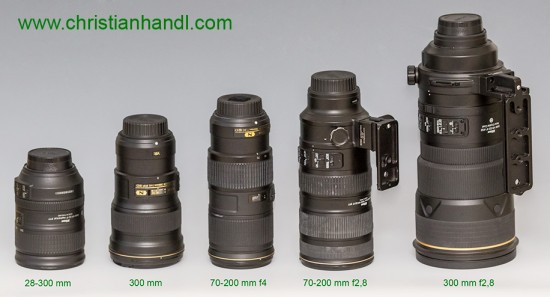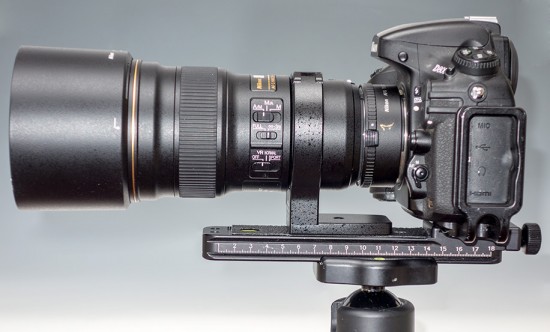
Christian Handl (www.christianhandl.com) tests the new Nikon AF-S 300mm f/4E PF ED VR lens:
Short Verdict: A great lens, buy it if you need it!
At the beginning some considerations about fixed focal lenses versus Zoom lenses:
Simple said a Zoom is more versatile, so for example at a street parade I would use my Nikon Af-s 28-300 mm f3,5-5,6 lens. For landscape and architecture I use my 24 and 45 mm shift lenses, the 14-24 mm Zoom and the 70-200 mm f4 and if necessary the TC1,4x II.
For sports, action and animal photography it gets more complicated for me. I often would like to use my 200-400 f4 or the 300 f2,8 lens but depending on the location I often choose lighter gear, especially when I have to travel with a plane. I do know winter sports photographers here in Austria who travel by car to Norway many 1000 miles just to prevent the hassles flying with their heavy equipment.
In my opinion in the last years of digital photography not only the resolution got better, but also the electronics in general, so High Iso is much more usable and also the AF speed has improved. While sports photographer will not stop carrying around heavy lenses, the trend goes to smaller and lighter systems. And due to the improvements of technology you do not give up so much in terms of quality than you might think.
In this regard the new Nikon AF-S VR 300mm 4.0E PF ED lens is a bit of a game changer. The former 300 mm f4 was always very popular, simply because it had a good price/performance ratio. The new one now weighs half, costs more but still has a good price/performance ratio because it also performs better. It has now the newest VR built in for example, but from my tests the optical performance is also outstanding and then it is half the weight! I was really astonished how small this lens is when I first put it out of the box.
But why make such a fuss about the weight of one lens? Ok, I get older and lazier so that fits me nicely when some parts of my equipment get lighter. The 300 mm f2,8 weighs about 3000 grams, the 300 mm f4 weighs just 850 grams!
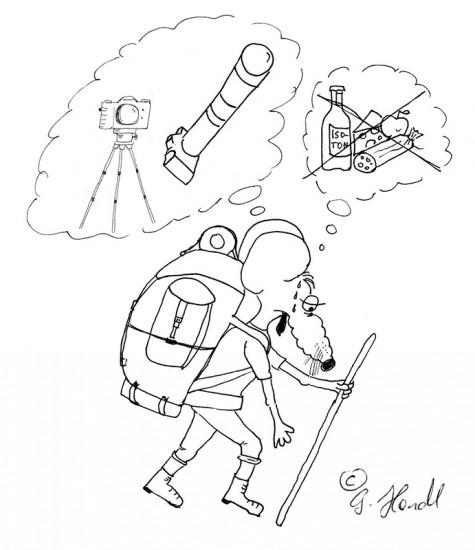
Consider this: for all the bigger tele lenses, you need a bigger backpack, a heavier and more sturdy tripod and then add some accessories like a gimbal head and you end up for a wildlife trip with maybe 3 to 5 kg more to carry around. And that just for the gain of one f stop and a little bit better AF performance (mainly in low light). But, you will say, all the good wildlife photographers do have the big lenses. Yes, they have them, but they are successful not because of their lenses, but because they are crazy guys willing to do all the can to get one good shot. They stay a year in Africa, the jump in waterholes to take pictures of lions (and get sick afterwards of the not so nice small “animals” in this water), they use copters, mini jeeps or a „beetle cam“ and whatever else they can do to get the shot.
I am a professional photographer. I do not think that I am a better photographer than an amateur, but my income does only come out of my photography. And the truth is, the most boring photo jobs often do make the most income. I also have about 17 000 pictures online at an agency (Imagebroker). Funny thing is my most loved pictures seldom sell best and wildlife pictures specially sell worse. So while I enjoy taking pictures worldwide and it is a great thing to get near to wildlife, it does not make much sense for me commercially. So I do me and my photographing wife a favor and take lighter equipment with me, which makes traveling more enjoyable. A good side benefit is that we are able to walk more with a light equipment, and yes even in Africa you have great hikes you can do (without being eaten by lions). And suddenly you might get unique pictures nobody else has, because all the other photographers are sitting in their jeeps at the same waterhole. So getting lighter does not mean getting lazier, because you still have to get up before sunrise to get the best light, no matter how small your equipment might be. But it might help to get up the mountain in time and with some breath left for putting up the tripod.
I do not like pixel peeping, but Test shots are necessary to get a feeling what a lens is capable of. And to confirm that the lens you bought has not fallen of the shipping container. But you have to make your own tests with your own equipment no matter what my findings are – and as I said they are very good:
The lens is really small for a 300 mm lens, similar to the 70-200 f4 in length but wider at the end. Total weight is about 850 grams with lens hood and caps. Handling is good on a D800. Smooth and fast autofocus, VR seems to work well, I would say about three stops in real use. Pictures are sharp and contrasty, specular highlights nothing to worry so far.
The first test shots showed me, that sharpness is best wide open and gets a little bit less at f5,6 which is quite unusual, at f8 it improves again and also at f11 it is excellent.
I tested the 300 mm f4 against the 300 mm f2,8 and made also some comparisons with the 70-200 mm f2,8 VR II and 70-200 mm f4 both with TC 1,4 II, TC 2x III and also the 28-300 mm Zoom. Test distance was about 8 meters.
To my surprise the 300 f 4 is sharper than the 300 mm f2,8 at f4. I rerun the test with the same results.
The 28-300 mm Fx lens is no match for this lens but does get good sharpness at 300 mm at least when stopped down to f8 or f11. Interesting that it does not get to real 300 mm at a distance of 8 meters.
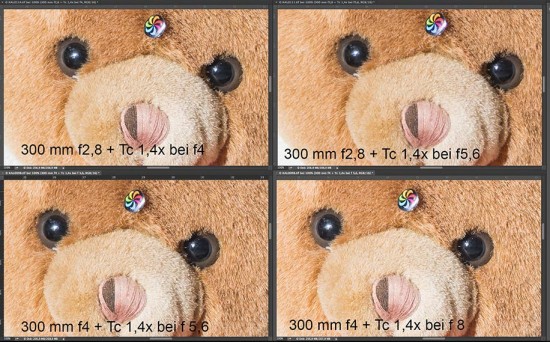
@ 400mm with 70-200 f2,8 and 70-200 f4 + Tc 2x III
The winner is the 70-200 f4 with the TC 2x III. I was never quite happy with the quality of the 70-200 f2,8 and the TC 2x III, up sampling (or cropping if you prefer) from a picture with the TC 1,4x was at least the same quality. So for static subjects the 70-200 f4 with the TC 2x is quite usable and this combo works also quite well for macro, as the f4 version does not suffer so much from focus breathing at near distances as the f2,8 version.
@420 mm with TC 1,4x II
The winner is the 300 f4 at f5,6 by a small margin. Stopped down to f8 the 300 mm f2,8 lens is as good.
@ 600mm with TC 2x III
The winner is the 300 f2,8 with optimal results at f8. The Af of the 300 mm f4 does work but gets slower and hunts in low light.
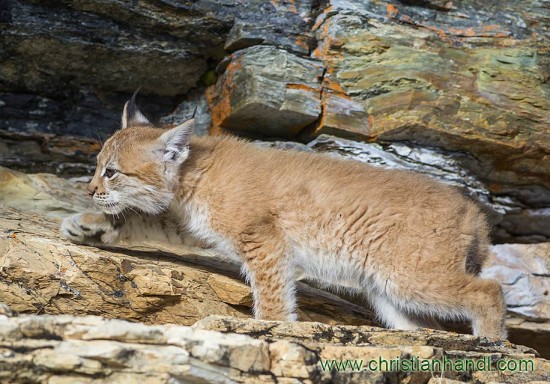
Young wild Lynx in the Abisko National Park, Sweden. Technical Data: Nikon D800, Nikon Af-s Vr 300 mm f2,8 with TC 2x III, tripod
Up sampling of the very good picture made with the 300 f4 and the TC 1,4x gets at least the same quality as the picture with the TC 2x. So the TC 2x III is only good for the 300 mm f2,8.
Macro is possible with a 1,4 TC II and a small 12 mm Extension tube you get almost to 1:2 (half life size). And due to the 77 mm front diameter you could also use a diopter lens with good results.
With Teleconverters I used a tripod ring to get better balance and got some vibration issues:
On a sturdy tripod from Really Right Stuff with a Markins Ball Head I did not get sharp pictures with the 300 mm f4 and a TC 1,4x II at critical times like 1/30 sec, although the cheap Chinese tripod rings fits good and can be tightened well, so there is no wobbling around. With the lens alone you do not need such a ring, as the lens is lightweight enough to fix the camera directly on the ball head (I do this via a RRS L clamp). With a TC the whole setup gets fragile because of some play between the bayonets and the more weight and length of the setup. For action shots a tripod clamp with a gimbal head is a good thing and for this even the cheap Chinese one do work well, because you need fast shutter speeds anyway.
Maybe the expensive clamps from Nikon, RRS or Kirk do make a difference. My solution for static subjects is to fix the camera and the clamp on the lens with a panorama rail. Then my vibration issues are gone, but this setup is only good for one orientation at a time.

There is also one more reason for faster lenses (sometimes): AF accuracy.
With teleconverters attached I did find often that the single middle AF (on the eye of the teddy) was not accurate. All test pictures were made with camera control pro and mirror pre release. I did focus with live view and this was especially with the TC´s much better, not to say spot on. But this only works with static subjects as the Live View AF is too slow for action shots. I was astonished how problematic the AF accuracy can be beyond 300 mm. The lenses were calibrated with „Lens Align“, but I get more and more the feeling, that this just makes the issue less worse, but does not solve it. Especially in low light the AF with TC´s attached gets problematic or inconsistent, which is to be expected, but should be mentioned anyway.
As said in the beginning this is a great lens which can be used for a wide area in photography. Zoom lenses like the Tamron 150-600 for almost half the price will certainly appeal to photographers with a tight budget. But if you use a Nikon D800/810 I think the fixed focal lenses are the better choice to get the resolution the sensor can deliver (but the optics often cannot).
420 mm is for me enough, cropping from 36 MP means that at 600 mm I still have more than 16 MP left, more than enough for big prints. So while I really thought of buying a Tamron 150-600 mm lens, I will choose the more expensive and less flexible AF-S VR 300mm 4.0E PF ED lens. Together with the 70-200 mm f4 and a TC 1,4 it is versatile enough for me. I just fear that my wife will not be satisfied with the 28-300 mm anymore and I have to buy a second one.
And the cartoon by my wife shows another reason why photographers still think that bigger lenses are better:
